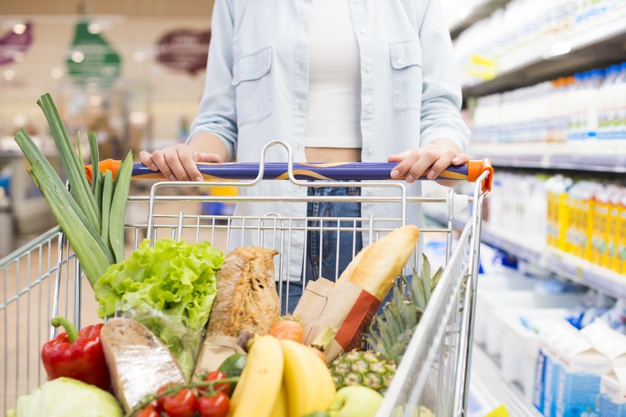Grocery stores are adopting autonomous checkout systems in an effort to improve efficiency and cut cost. With these system, customers can scan and bag their own items without the need for a traditional checkout lane.Grocery stores are increasingly turning to autonomous checkout systems as a way to improve their bottom line. Where does Amazon Go Grocery fit in?
Amazon Go at 5X. That would be what Amazon Go Grocery is trying to achieve. Its just-opened Seattle location is a true multi-aisle grocery store that’s up to five times larger than existing Amazon Go convenience stores, but it uses the same technology mix of cameras, sensors, and AI related software.
This is a major step forward for autonomous checkout systems, since scale and installation costs are key determining factors for more adoption among various retail categories. As we have mentioned in previous PaymentsJournal commentary and Mercator Advisory Group research, several other developers have autonomous checkout systems of their own that will be operational in more stores in the year ahead.
Expect 2020 to be an expansive year for autonomous checkout and other self-service shopping methods.
A Grocery Dive article , which is excerpted below, discusses more on this topic:
Amazon will open its first grocery store on Tuesday morning — and it’s not located in Southern California. The company is throwing open the doors to Amazon Go Grocery, a new retail brand that combines the full selection of a traditional grocery store with the futuristic checkout-free technology that has captivated consumers and industry experts alike. Located in Seattle’s Capitol Hill neighborhood, it’s more than three times the size of other Go stores and features around 5,000 products compared to Amazon Go’s 500 to 700.
The new format builds out many of the categories found inside its Go stores, and also adds new selections. Located near the entrance are more than two dozen varieties of fresh produce arranged in standalone and chilled displays, from organic apples to conventional onions and salad greens. Items are priced individually, with red tags noting “Great Low Price” items. Bananas are 19 cents each, while avocados are 49 cents.
Nearby sits a large case with fresh baked donuts, croissants and other pastries, along with a section filled with packaged fresh meals and sides. Six aisles of groceries, including frozen items, household goods, dairy and fresh meat occupy nearly half of the 7,700-square foot selling floor (the whole store is 10,400 square feet), while at the other end a separate room filled with beer, wine and spirits beckons shoppers. For those looking for a fresh cup of coffee, there’s a self-service station serving Starbucks.
Cameron Janes, Amazon’s vice president of physical stores, gave Grocery Dive a tour of the sales floor on Monday. He said that while Amazon Go is tailored toward office workers grabbing breakfast, lunch and snacks, Amazon Go Grocery is targeting high-density urban neighborhoods and dinner solutions.
Overview by Raymond Pucci, Director, Merchant Services at Mercator Advisory Group
